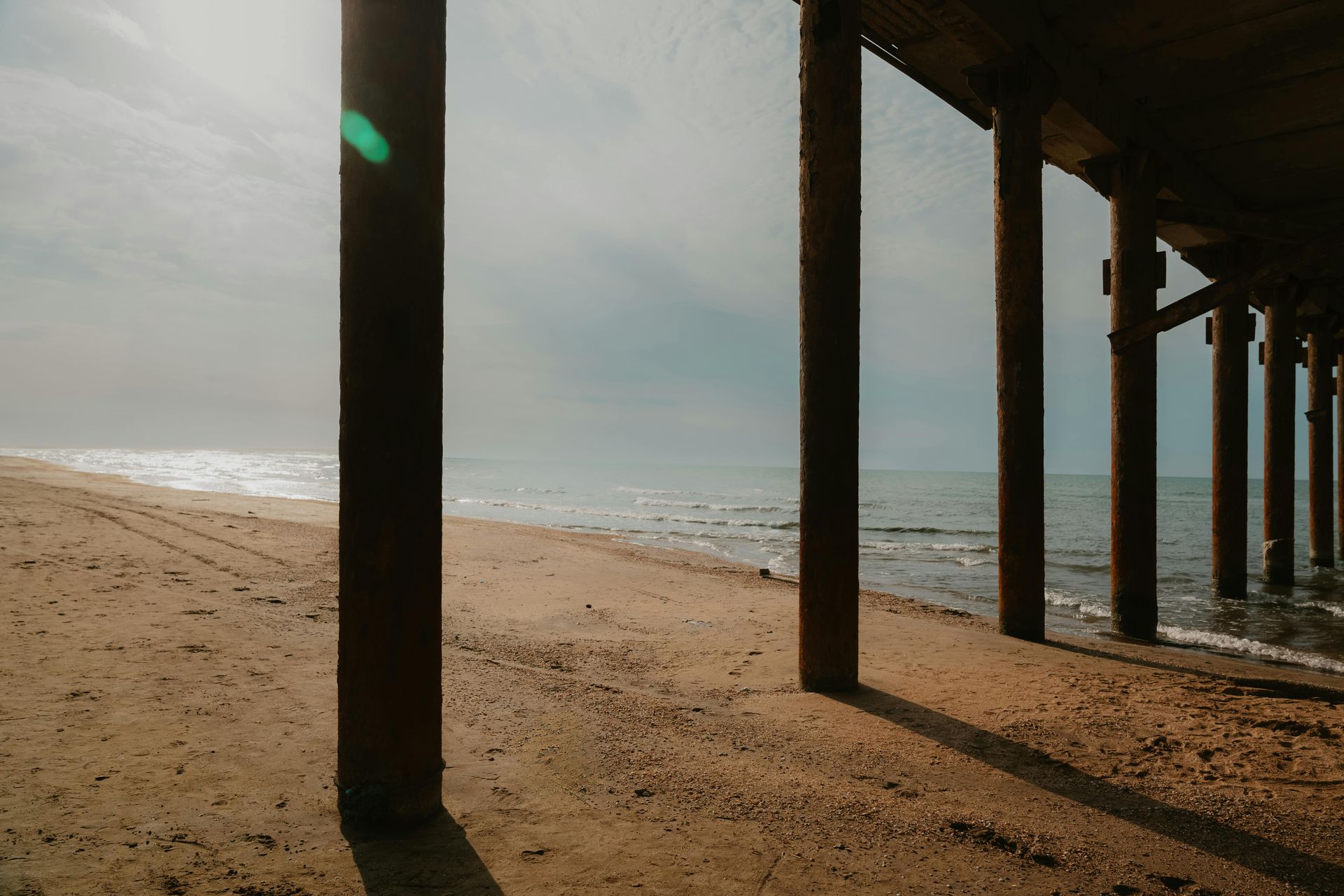Moreno Valley's Leading Piers and Beams Installation Experts

Foundation piers are essential structural supports made of concrete that provide stability to a building's foundation or superstructure. Their design often resembles a spindly branch with two long, flexible arms on either end. These arms, typically constructed from wood, can also be made of steel, aluminum, iron, concrete, or stone. Foundation piers are strategically placed at the corners of buildings or other key structural points. In Moreno Valley, CA, where soil conditions can vary, properly designed foundation piers are crucial for preventing settlement issues and ensuring structural stability. When a structure has sufficient stability, the foundation piers are deemed adequate without the need for additional reinforcement, making them an essential component of long-term structural integrity.
However, even when structures are considered to be adequate, certain conditions can still prevent the foundation piers from performing their required tasks. For example, under normal circumstances, there is usually no significant change in temperature throughout the year, especially during winter. In this case, the coldness at the corners of the structure will prevent the concrete piers from expanding and contract as they should, thereby causing cracks in the structural supports.
When this occurs, cracks will eventually widen, move out of the frame of the structure, and begin to pose a danger to people walking around the outside of the building. If not caught in time, these cracks can cause major damage to a foundation piers installation. In addition, cracks in the concrete piers can expand inward and create an interior space that is unoccupied by any sort of supporting structure (such as joists). The result can be the collapse of the concrete piers or other structural supports at the junctures where the cracks and spaces open. Even though this can result in massive structural damage, it is not likely to cause significant structural damage to buildings that have not been significantly damaged by natural calamities. The only risk associated with foundation piers that cannot be prevented is the ones that develop after a structure has already been built.
Call us today at 951-221-5882.
What are Piers and Beams?
Piers and beams are essential components of a pier and beam foundation, which is commonly used in areas where soil conditions make other types of foundations unsuitable. This type of foundation involves placing foundation piers deep into the ground to support the weight of the building, while beams provide additional stability. Pier and beam foundations offer several advantages, including easier access to plumbing and wiring beneath the house, better protection against flooding, and increased flexibility for future repairs.
Pier and beam foundation repair is a crucial part of maintaining the stability and longevity of homes built with this method. The use of durable building materials like concrete or steel for the piers ensures the foundation remains strong for years to come. However, as the structure ages, it may require pier foundation repair to correct any settling or shifting that occurs.
How Do Piers and Beams Work?
The key to understanding how a pier and beam foundation works lies in the distribution of weight. The foundation piers transfer the weight of the building from the beams into the ground, providing a stable platform even in areas with poor soil quality. This design also allows the foundation to absorb and accommodate slight movements in the soil, reducing the likelihood of cracking or structural damage over time.
Additionally, the beams work in tandem with the piers to support the overall load of the house, making pier and beam foundations both flexible and durable. In the case of uneven soil movement, homeowners can opt for pier and beam foundation repair using helical piers. These specialized piers are drilled into the ground, ensuring stability even in challenging environments.
How Do You Install Foundation Piers?
When building a new structure, it is common to install the concrete foundation piers before laying the footing. However, many home and business owners make the mistake of installing the piers too early. This mistake can result in the foundation becoming misaligned or in a state of disrepair, which will require foundation repair or foundation piers to remedy the situation.
If the interior foundation pier installation, Moreno Valley, CA was done too early, the contractor may place the exterior foundation piers in an improper location. For example, if the pilings were installed too high, the soil under the pilings will begin to erode, causing the pilings to break off and fall off. In some cases, the contractor may install the exterior foundation piers too low, which will force the soil to begin to bulge outward. No one wants to discover this problem after construction has begun, so it is critical that foundation experts ensure that these pilings are set at the proper level.
If you choose to hire a contractor to perform your exterior foundation piers, he/she should first inspect the site to determine the exact location of each pier. Most contractors begin with the interior piers. After determining the location, they will then determine the best place to position the exterior foundation piers. They may want to position the piers higher, in order to help support the weight of the house or building structure. On the other hand, they may want to locate the piers lower, in order to alleviate any pressure on the foundationwalls.
Many people are initially confused by the term "helical piers." Helical piers are a cross-shaped piece of reinforcement that is placed inside the ground. It is commonly used to support roads, sewers, ditches, etc. The term "helical" was actually coined from helical curves on the cross-section of the piers. These curves are typically perpendicular to the surface they are covering but can be turned 90 degrees to the ground for use in underground utilities.
In addition to being commonly used to support structures, interior foundation piers are also commonly used as outdoor play areas and patios. You may even see them as an addition to a garden shed. In fact, many people like to build their own outdoor playgrounds using their exterior foundation piers. Of course, you can always hire a contractor to do this for you, if you don't feel comfortable doing it yourself. Get in touch with us today, so we can help solve the problem!
The Lifespan of Piers and Beams
The lifespan of a pier and beam foundation can vary depending on factors such as soil conditions, quality of building materials, and local climate. However, with proper maintenance and timely foundation repair, pier and beam foundations can last anywhere from 75 to 100 years or more.
Routine inspections and addressing minor repairs early can significantly extend the life of a pier and beam foundation. In cases where the piers begin to settle or shift, it’s essential to conduct a pier foundation repair to prevent more severe damage. Opting for solutions like helical piers can enhance the foundation’s stability and ensure it remains durable for decades.
Pier and Beams Load Capacity
One of the most significant advantages of a pier and beam foundation is its ability to handle varying load capacities. The strength of the foundation piers and beams directly impacts how much weight the structure can bear. Depending on the size and material used for the piers, a pier and beam foundation can support substantial loads, making it a popular choice for residential and even light commercial buildings.
However, over time, load-bearing capacity may diminish due to soil erosion or wear and tear. To ensure the foundation continues to support the building adequately, periodic pier and beam foundation repair may be necessary, especially in regions with shifting soil or extreme weather conditions.
To stay ahead in today's fast-paced industry, be sure to explore
our blog, where we share the latest trends, expert insights, and strategies designed to help you excel in your business endeavors.
What is a pier and beam foundation?
A pier and beam foundation is a type of foundation that uses piers driven deep into the ground to support the weight of a building. Beams are then placed horizontally across the piers to distribute the load.
What are the signs that I need pier and beam foundation repair?
Cracks in walls, uneven floors, and doors or windows that don’t open or close properly are common signs that you may need pier foundation repair. Early intervention can prevent further damage.
How much does it cost to install helical piers?
The helical piers cost can vary depending on factors such as the depth of installation and soil conditions, but on average, homeowners can expect to pay between $1,000 and $3,000 per pier.
How long does a pier and beam foundation last?
With proper maintenance, a pier and beam foundation can last up to 100 years. Regular inspections and addressing repairs promptly will help extend its lifespan.
Can helical piers be used for pier and beam foundation repair?
Yes, helical piers are an excellent option for pier and beam foundation repair. They provide additional stability, especially in areas with poor soil quality, and are designed to last for many years.



